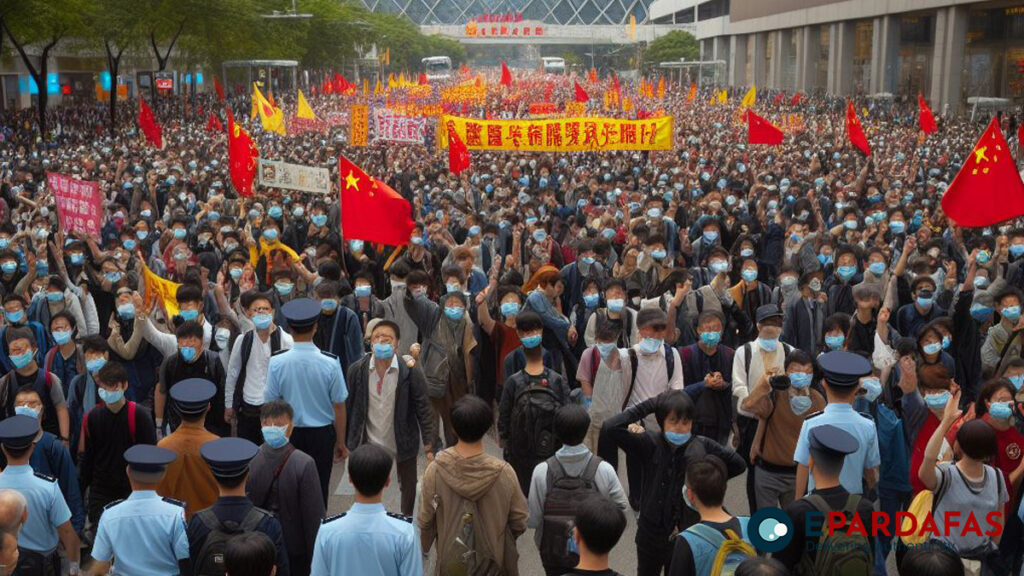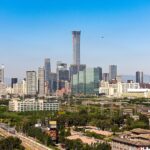Mass protests have swept across China, with factory and construction workers taking to the streets in anger over the economic fallout of tariffs imposed by US President Donald Trump. These protests have intensified in recent days, peaking in late April 2025, as workers across various industrial zones grapple with factory closures, wage defaults, and a significant slump in export orders. The unrest, which has spread from Shanghai to Inner Mongolia, reflects widespread frustration over the mounting economic challenges faced by workers in critical sectors.
The unrest began to escalate as factory output in several major industrial hubs dropped sharply, with businesses struggling to meet production targets due to a combination of international tariffs and shrinking demand for Chinese exports. These regions, heavily reliant on manufacturing and construction, saw significant economic contraction, leading to large-scale layoffs and delayed or unpaid wages.
The trade war between the US and China, which has been ongoing for several years, took a new turn in April 2025, when additional tariffs were imposed by the US government under President Trump’s administration. This move exacerbated the already fragile economic conditions in China, driving workers to voice their discontent.
The tariffs, imposed on a range of goods including electronics, textiles, and construction materials, have had a profound impact on the manufacturing sector, which is crucial to China’s economy. According to economists, the latest round of tariffs further inflated production costs, thereby discouraging international buyers from placing orders with Chinese factories. This has resulted in fewer contracts, leaving manufacturers unable to pay workers or meet financial obligations.
In major cities like Shanghai, Shenzhen, and Guangzhou, which are home to thousands of factories, protests erupted as workers demanded payment for overdue wages and greater job security. Many of the protesters are part of a vast migrant workforce that has relocated to these industrial zones in search of better opportunities. The inability to secure stable employment has left many workers in a precarious position, prompting public demonstrations.
The situation has been exacerbated in smaller cities and rural areas, particularly in the northern regions such as Inner Mongolia, where the local economy is heavily dependent on large-scale construction projects. These areas have witnessed protests by workers who have not only been left unpaid but also have faced delays in the completion of major infrastructure projects. Workers have expressed anger over broken promises from both employers and local government officials, who have been unable to mitigate the negative impacts of the global trade tensions.
Reports from the ground indicate that some of the protests have turned violent, with clashes between demonstrators and security forces. These confrontations have prompted local authorities to deploy additional law enforcement personnel to quell the unrest. In certain cases, road blockages and strikes have disrupted transport and supply chains, further exacerbating the economic strain.
Despite the visible signs of unrest, the Chinese government has maintained a firm stance, arguing that the country’s long-term economic stability will prevail despite the external pressures. However, analysts have pointed out that the protests could have significant political repercussions if they continue to gain momentum. In response to the growing unrest, Beijing has sought to reassure both domestic and international markets that measures are being put in place to support workers and mitigate the economic challenges posed by the tariffs.
The Chinese government has rolled out several support packages aimed at stabilising the economy, including subsidies for struggling industries and incentives to encourage foreign investment. While these measures may provide some relief, it is clear that the root causes of the protests lie in the country’s ongoing trade disputes and the broader economic restructuring required to adapt to changing global trade dynamics.
International observers have raised concerns about the potential for broader social unrest in China, with some suggesting that the protests could evolve into a larger movement demanding reforms in the country’s economic and political system. The Chinese Communist Party has historically maintained tight control over public dissent, but with a slowing economy and rising discontent, the government faces a delicate balancing act.
Economic experts argue that the persistent trade war with the US is undermining China’s long-term growth prospects, particularly in sectors like manufacturing, where competition from other countries is intensifying. As the tariffs continue to affect Chinese exports, workers in the manufacturing and construction sectors are likely to face prolonged periods of uncertainty. While the government has suggested that the tariffs are a temporary obstacle, the impact on the ground is evident and immediate, especially in regions heavily dependent on export-oriented industries.




 Beijing Eases Tariff Burden on U.S. Imports Amid Trade Tensions
Beijing Eases Tariff Burden on U.S. Imports Amid Trade Tensions 